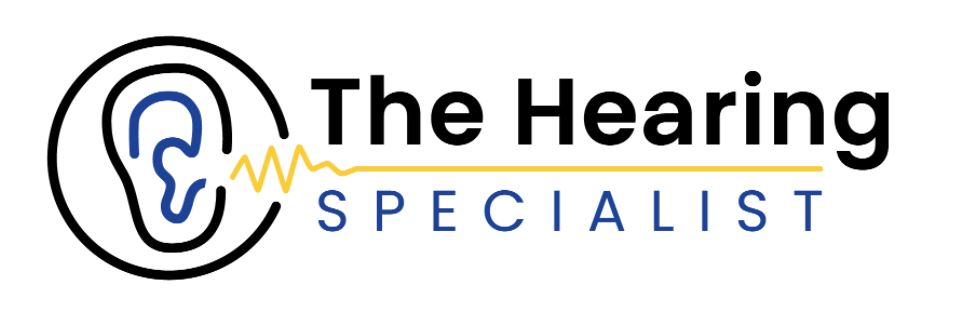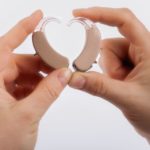It’s easy to assume that all hearing aids are equal, but this is far from the truth. Hearing aids differ widely in their technology, design and special features, and because of this, choosing a suitable hearing aid that meets your unique needs is crucial.
Understanding the key differences between types of hearing aids and the manufacturers that produce them is essential when making an informed decision. And, most importantly, seeking the advice of an audiologist is necessary when looking for a hearing aid that matches your specific conditions.
In this blog, we’ll explore the different types of hearing aids, how various models and manufacturers differ, and why expert guidance is key to finding the right solution.
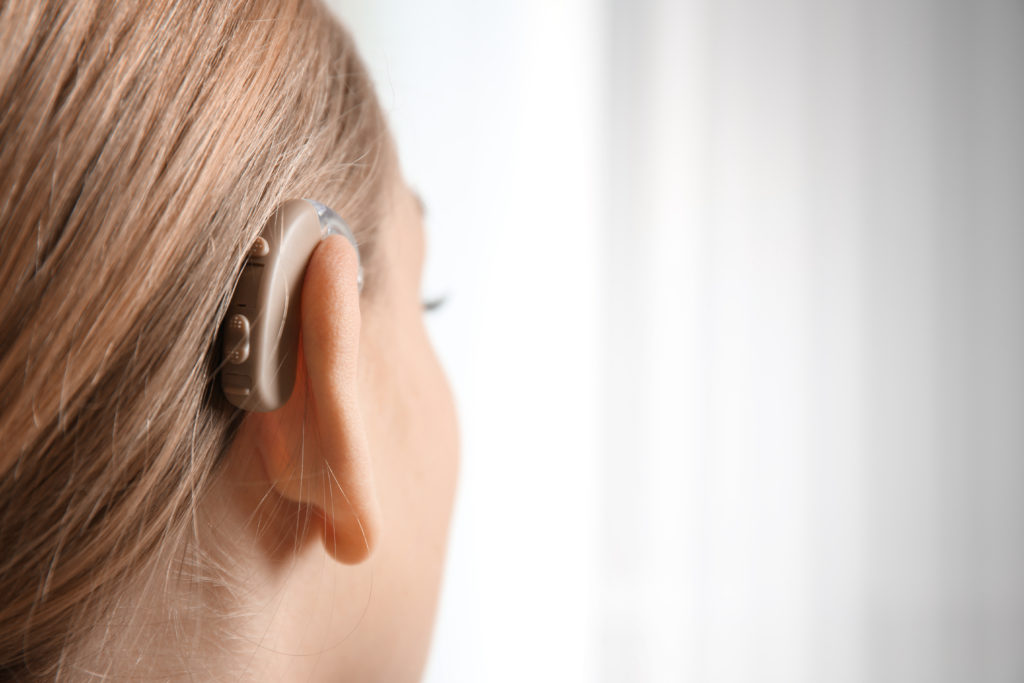
What are the different types of hearing aids?
Hearing aids come in many different styles, each designed for specific types of hearing loss, lifestyle preferences and aesthetic needs. Understanding these differences can help narrow down the type of hearing aid suitable for you.
Behind-the-ear (BTE) hearing aids
BTE hearing aids are worn behind the ear, with a tube that connects to an earmould or a small speaker inside the ear canal. They are suitable for people with mild to profound hearing loss. These devices are often larger, but modern designs have become much more discreet. They offer a range of features and are typically more durable than smaller models.
In-the-ear (ITE) hearing aids
ITE hearing aids fit entirely inside the outer ear. They are less visible than BTE models and are easier to insert and remove, making them ideal for individuals with dexterity challenges. These hearing aids generally have larger batteries, giving them a longer battery life. ITE aids are suitable for mild to severe hearing loss.
In-the-canal (ITC) and Completely-in-the-canal (CIC) hearing aids
ITC and CIC models are smaller and fit deeper inside the ear canal, making them less visible. Because of their compact size, they tend to have fewer features, such as volume control or directional microphones, and shorter battery life. They are suitable for mild to moderate hearing loss and are custom-made to fit the shape of the user’s ear.
Some modern ITC and CIC hearing aids are also called “invisible hearing aids” and have advanced features such as sound bathing which helps manage their tinnitus, and Bluetooth which allows wearers to access settings to help improve their experience.
Receiver-in-canal (RIC) hearing aids
RIC hearing aids are similar to BTE models but use a thin wire to connect the main body of the device to a receiver placed in the ear canal. This design allows for a more open fit, resulting in a natural sound quality. RIC models are comfortable, lightweight, and suitable for mild to moderate hearing loss. They are ideal for individuals who want a balance between discretion and performance.
Each type of hearing aid has its advantages and limitations, and selecting the right one depends on your specific hearing needs and lifestyle.
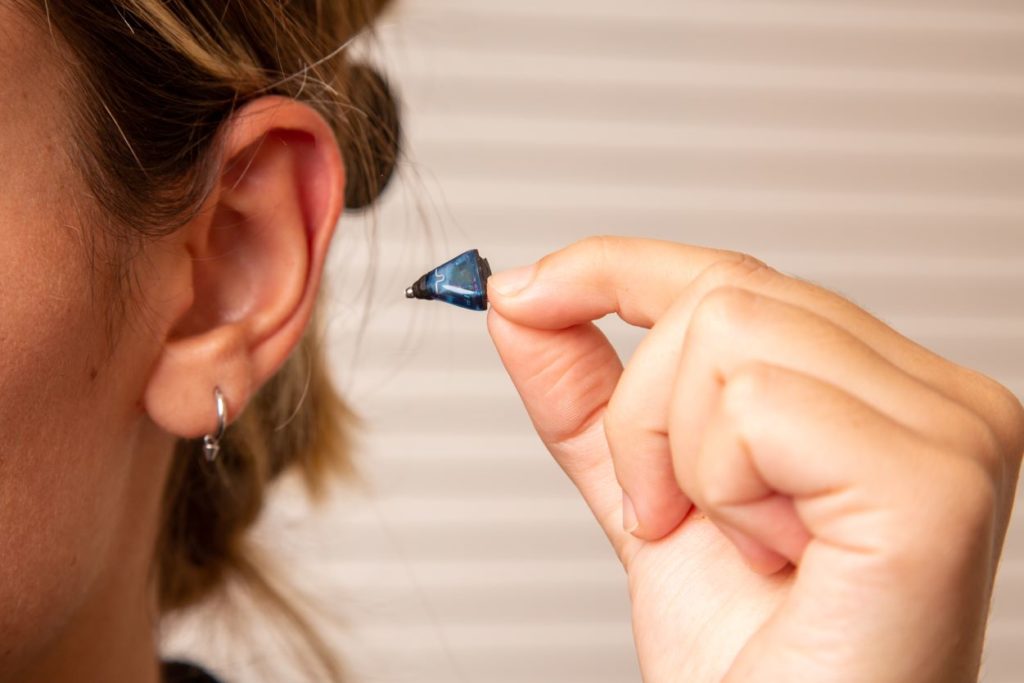
What do the different hearing aid manufacturers offer?
We’re proud stockists of the world’s most recognised hearing aid manufacturers. Here are some leading hearing aid manufacturers and the unique advantages and models they offer.
Phonak
Known for innovation, Phonak hearing aids are powerful and feature-rich. They offer models with rechargeable batteries and Bluetooth capabilities, allowing users to connect directly to smartphones, televisions, and other devices. Phonak also provides hearing aids for severe-to-profound hearing loss, making them a versatile option.
Oticon
Oticon is renowned for its “brain hearing” technology, which helps the brain process sound more naturally. Their models are particularly good at handling background noise, making them ideal for people who need to improve speech understanding in noisy environments. Oticon’s hearing aids are also known for their comfort and sound quality.
Starkey
Starkey emphasises health and wellness features in their hearing aids. Some models offer health tracking capabilities, such as monitoring heart rate and detecting falls, which can provide added safety for older adults. They also offer Bluetooth connectivity and smartphone app controls.
Widex
Widex hearing aids focus on delivering natural sound quality, even in challenging listening environments. Their models include features that improve speech clarity without sacrificing sound richness. Widex is a great option for individuals who prioritise sound fidelity in their hearing aids.
Signia
Signia is known for its advanced technology, including Own Voice Processing (OVP), which delivers a more natural sound of the wearer’s own voice. Signia also offers Augmented Xperience (AX), a technology designed to process speech and background noise separately, providing clearer sound in complex environments. Their hearing aids are sleek, modern, and available with rechargeable batteries and Bluetooth for smartphone connectivity.
Bernafon
Bernafon is part of the Demant Group and is known for providing hearing aids with a focus on high-quality sound performance. Bernafon offers DECS (Dynamic Environment Control System), a technology that automatically adapts to changing sound environments. Their hearing aids provide a balanced listening experience, ideal for users who want seamless transitions between quiet and noisy environments. Bernafon models are designed for comfort and are equipped with wireless connectivity for easy device integration.
What features should I look for in a hearing aid?
Not all hearing aids are created equal, even among the same type. Each hearing aid will have different features and levels of technology, and the level and features you want will vary depending on your lifestyle requirements and confidence in using the technology.
Technology levels
Hearing aids come in different technology levels, ranging from basic to advanced. Basic models often include standard amplification and noise reduction features, while advanced models may offer features like directional microphones, feedback cancellation, and Bluetooth connectivity. Advanced models are often ideal for individuals who need to manage complex sound environments, such as noisy restaurants or group conversations.
Battery life
One of the key differences between hearing aids is their power source. While some models use disposable batteries that need frequent changing, others are equipped with rechargeable batteries that can last for an entire day with just a few hours of charging. Some unique models can be worn continuously without the need to be taken out or charged. Rechargeable models are ideal for those who prefer convenience and don’t want the hassle of changing batteries regularly.
Customisation
Custom-fitted hearing aids are designed to fit the exact shape of your ear canal, providing greater comfort and improved sound quality. Manufacturers often offer a range of sizes and styles to match the anatomy of the wearer’s ear. This level of personalisation can make a significant difference in comfort, especially for those who wear their hearing aids for extended periods.
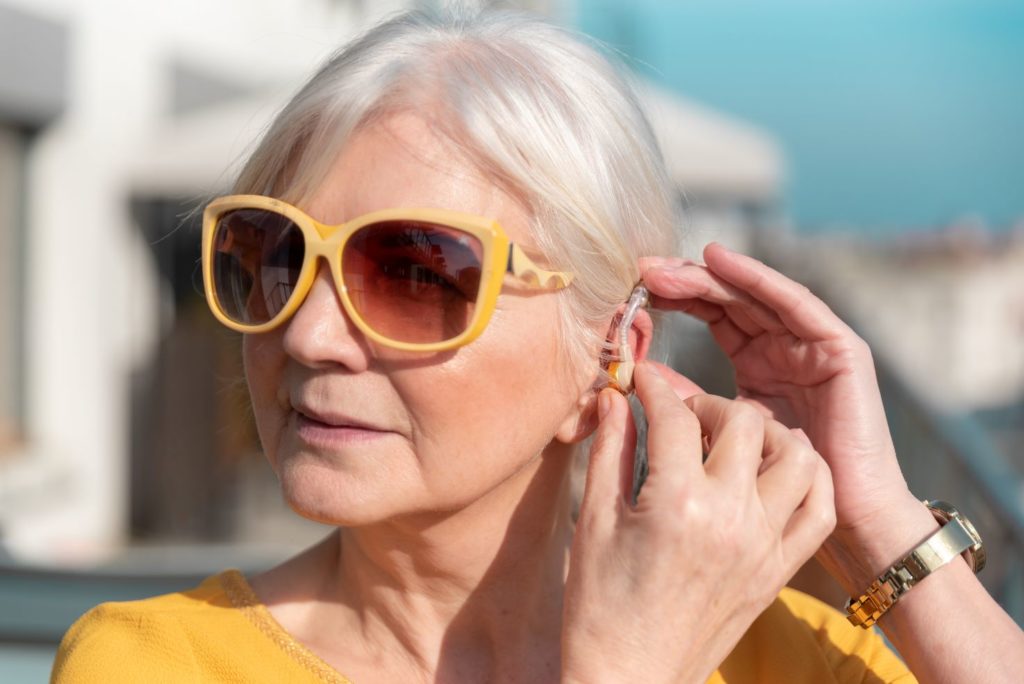
Tips for choosing the right hearing aids for your needs
With so many different hearing aids available, it can be challenging to decide which one is right for you. Several factors can help guide your choice, ensuring the best possible performance and comfort.
Severity of hearing loss
A hearing test will assess the severity of your hearing loss; this is one of the most important factors when selecting a hearing aid. Certain models are better suited for specific levels of hearing loss. For example, BTE models are generally more powerful and suitable for more severe hearing loss, while smaller ITC models might be adequate for mild to moderate loss.
Lifestyle factors
Consider your lifestyle when choosing a hearing aid. If you lead an active lifestyle and spend time in noisy environments, you may need a device with advanced noise-cancelling features and durable construction. On the other hand, office workers or those who regularly use mobile phones, Bluetooth-enabled models can provide seamless integration with communication devices.
Aesthetic preferences
Discretion can be an important factor for some users. If you prefer your hearing aid to be as invisible as possible, smaller devices like CIC or ITC models might be more suitable. However, these models may lack some of the features found in larger devices, such as directional microphones or volume controls.
Comfort
Comfort is key when it comes to wearing a hearing aid daily, and is an often overlooked feature when choosing a hearing aid. Custom-fitted hearing aids are designed to fit the shape of your ear canal, providing a secure fit without irritation. Proper fitting by an audiologist ensures your hearing aid remains comfortable throughout the day.
Cost
Your budget is also an important factor to consider when choosing a hearing aid. Each brand and model will vary in price and will change depending on whether you have monaural or binaural hearing loss. Your audiologist will discuss the hearing aid prices during your appointment.
The Hearing Specialist: here to help you hear
Choosing the right hearing aid can significantly improve your quality of life, but not every device suits every individual. That’s where our professional audiologists come in to help you select the best hearing aid for your unique needs.
Book your appointment with us here and we’ll assess your hearing and discuss with you the best options for you to choose from.
